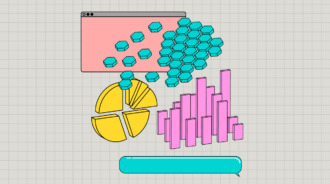

Day trading may be challenging for beginners, as it requires well-thought-out strategies, control of emotions, and fast reactions to frequently-changing market conditions. However, if you understand its basics, you will succeed. Keep reading to discover how to deal with day trades.
Fundamentals
Day trading, also known as intraday trading, is an approach used by active traders who set and close positions within one business day. Interestingly, it became popular following the deregulation of commissions in the US in 1975 and the launch of electronic trading platforms in the 1990s.
Intraday trades occur on 1-minute to 1-hour timeframes. Day traders aim to open many positions within one day. Day trading can be applied to any financial instrument.
Requirements
To succeed with day trading, you need to fulfill the following conditions:
- High liquidity. If you trade an asset with low liquidity, there is a risk the price won’t reach your targets within one trading day. So, your position will be moved to the next day.
- High volatility. High volatility sounds scary for newbies. However, you won’t be able to open many positions within the short term if you trade on calm markets. A price can fluctuate significantly and even form gaps.
- Experience. Before entering the real market, it’s best to test your strategies on a demo account. As day trading is stressful, you should feel confident in your strategy and stick to it until the trade is closed.
- Stop loss and take profit. Although these are short-term trades, you may miss an opportunity to close them with returns, especially if you handle numerous trades.
Approaches

Day trading is compatible with several strategies that can be applied to short-term trades.
- Scalping. Scalping is the “fastest” trading approach. A trader aims to open numerous positions, mainly on 5- to 15-minute timeframes. The idea is to open many successful trades to cover the spread applied to each of them.
- Range trading. Day traders apply support and resistance levels to find entry and exit points. It’s one of the simplest ways to catch buy and sell signals.
- News trading. It’s one of the most challenging strategies, as it’s based on fundamental analysis. A day trader needs to find a strong market event that can drive the price. The idea is to trade on market expectations and reactions to a certain event.
- Algorithms trading. There are complex algorithms that allow traders to catch small market inefficiencies.

Benefits and pitfalls
Every trading approach has pros and cons. You should be aware of them to avoid mistakes in trading decisions.
Advantages
- Rollover rate. A trader deals with a rollover rate if they keep positions open for several days. It’s the net interest return on a trade held overnight. Although the rate may be earned or paid, it’s better to keep yourself away from it.
- Experience. Intraday trading implies making numerous trades within a short-term period. Therefore, you can improve your skills quickly, as you learn from each trade.
- Control. When trading within one day, you control every trade. Therefore, your trading can’t be unexpectedly affected by overnight news or off-hours moves.
- Limited losses. When trading on long-term timeframes, you set wide stop-loss and take-profit orders. Otherwise, there is a risk the position will be closed earlier. When opening day trades, you place narrow stop-loss and take-profit levels that protect your positions.
Disadvantages
- Increased fees. Every trade involves costs. As you need to open numerous trades within a short time, your trading expenses will rise significantly. Therefore, you need to be experienced enough to open successful positions.
- No suitable conditions. Intraday trading means that you close a trade within one day. However, there may not be suitable conditions to close a position until the market is closed.
- Growing losses. Losses may surge fast, especially if you use leverage.
Day trading example
A day trade is a type of investment strategy in which an investor buys and sells stocks within the same trading day. This is in contrast to a longer-term investing approach, where an investor might hold stocks for weeks, months, or even years. Day trading can be a high-risk, high-reward strategy, and it requires a deep understanding of the market, as well as the ability to quickly make and act on trading decisions.
Here are some examples of day trades:
- An investor buys 100 shares of Company X’s stock at 9:30 am and sells those shares at 10:15 am for a profit of $50.
- An investor buys 500 shares of Company Y’s stock at 10:00 am and sells those shares at 2:00 pm for a loss of $75.
Pattern day trader
A pattern day trader is a trader who makes four or more-day trades in a five-day period. A pattern day trader must maintain a minimum account balance of $25,000. This is to ensure that they have enough capital to cover their potential losses, and to prevent them from using excessive leverage to make their trades.
In addition to the minimum account balance requirement, pattern day traders must also abide by certain rules regarding the use of margin. For example, they may only use margin to make a day trade if they have the required minimum balance in their account at the time of the trade. They must also maintain the required minimum balance in their account for the entire trading day, as well as for the five business days following the day of the trade.
Final thoughts
Day trading is an effective approach that allows traders to boost their skills. However, it requires reliable strategies and some experience to control a highly volatile market.








